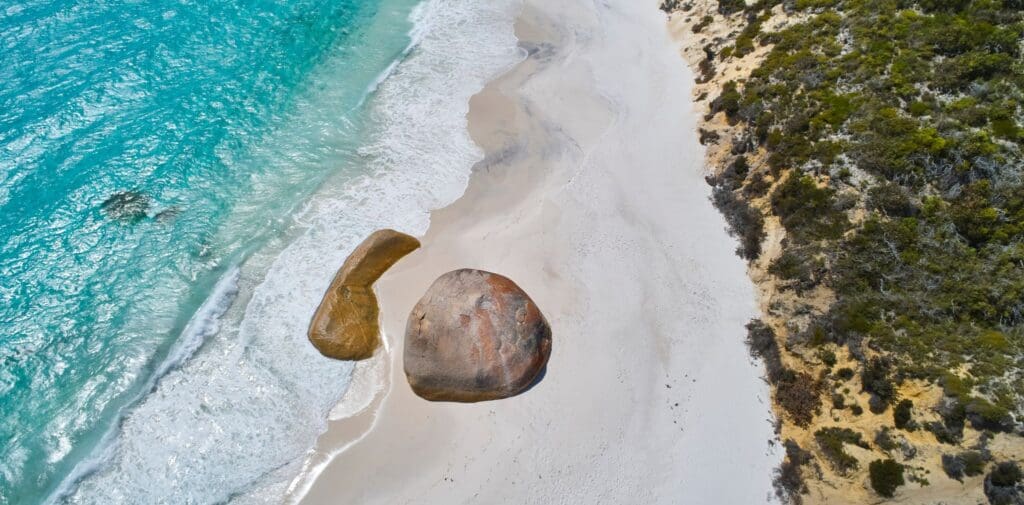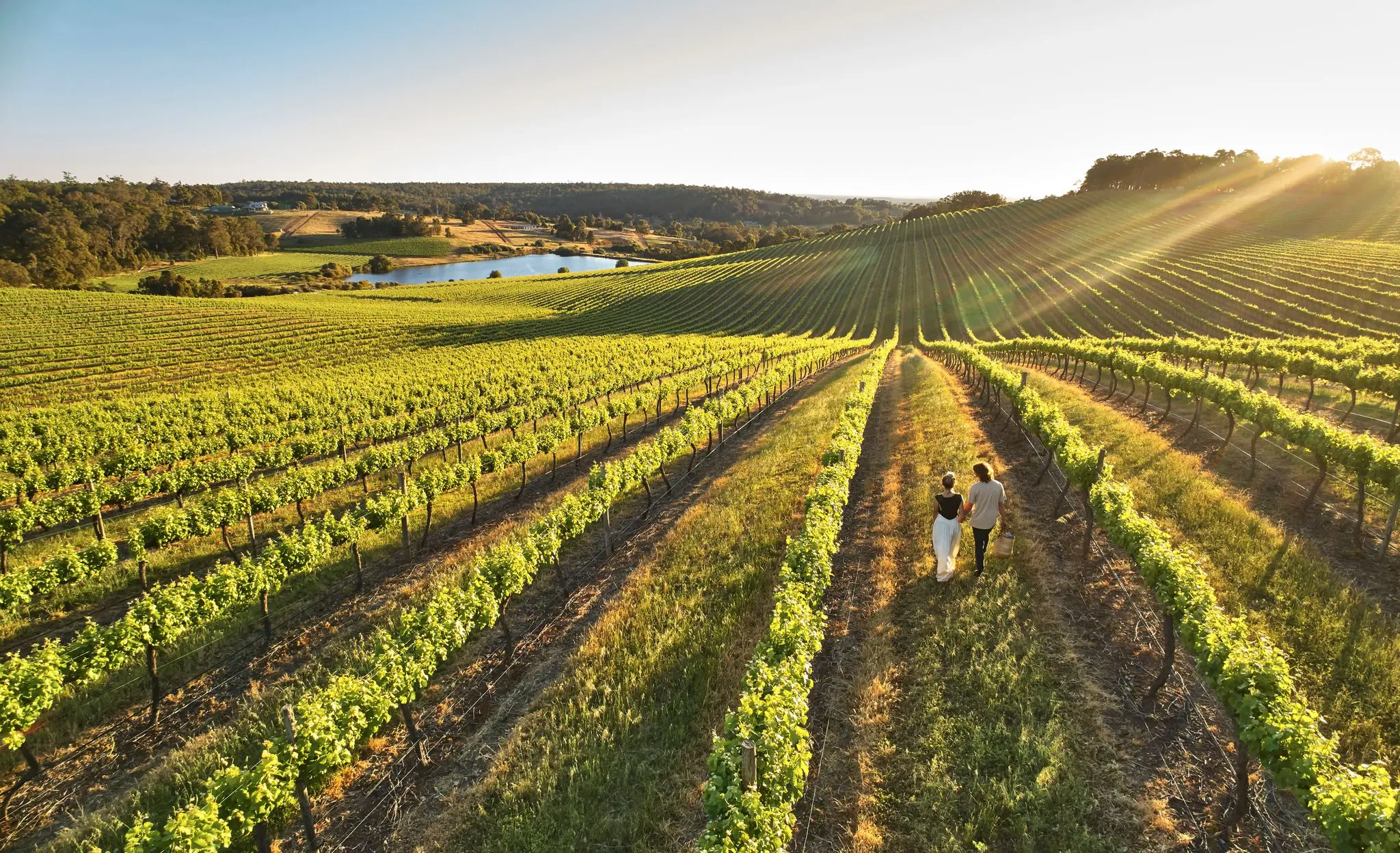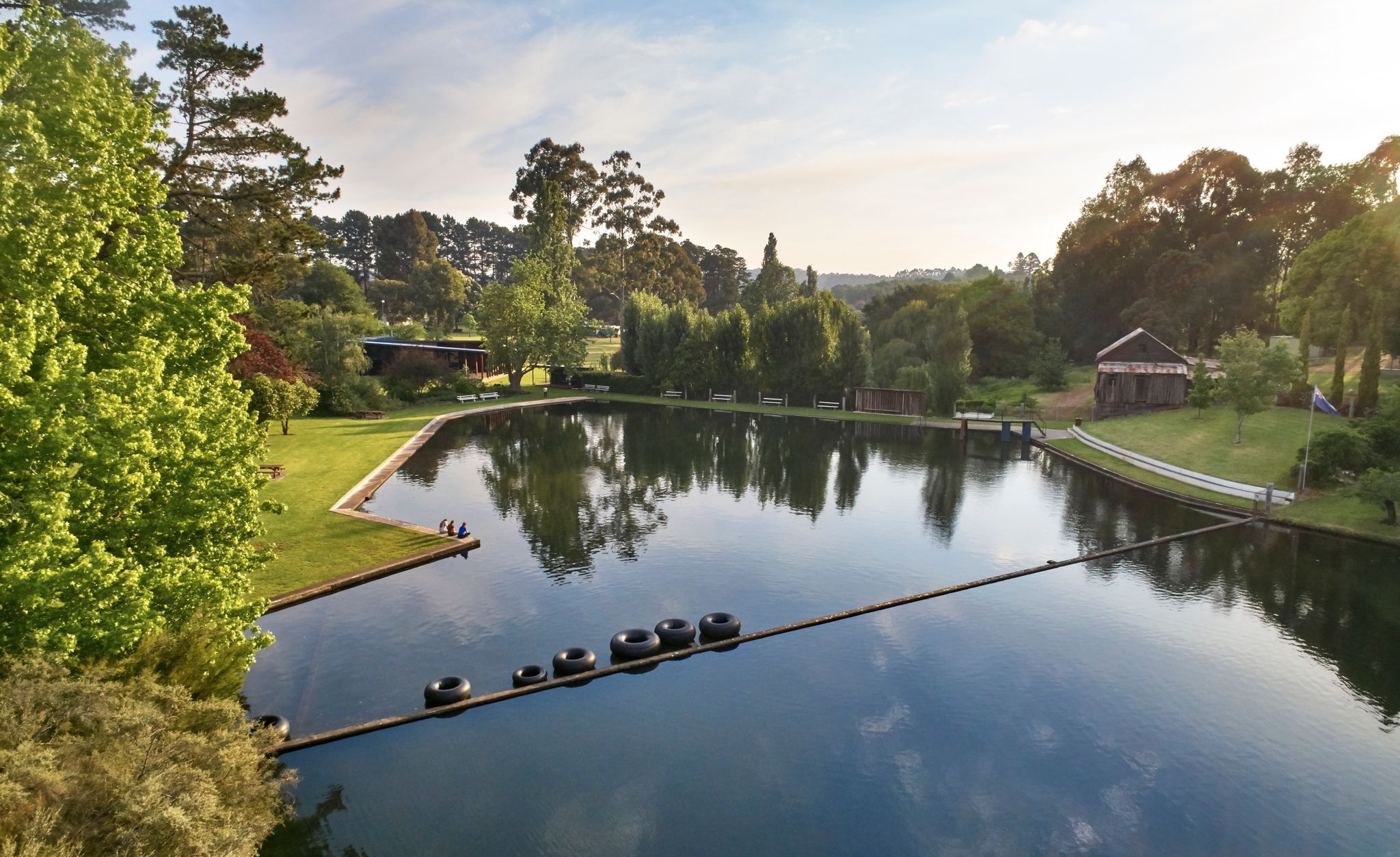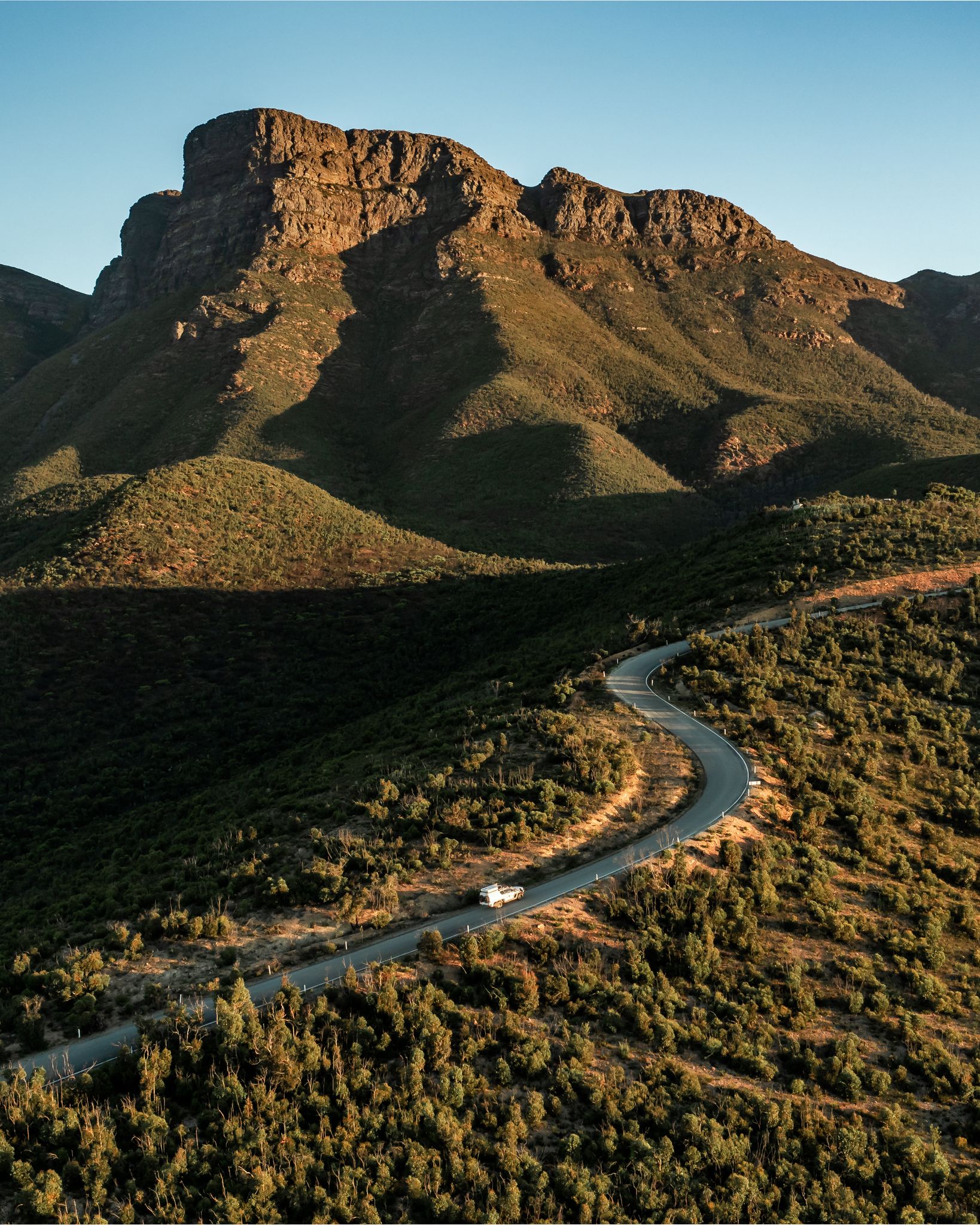Did you get fooled by our April Fools video? ICYMI: We created a video joking that one of the rocks at Little Beach near Albany in Two Peoples Bay Nature Reserve had disappeared – just for a bit of light-hearted fun. Watch the video here.
Rest assured the Little Beach rocks are very much in tact, and they’re just one of many amazing rock formations you can find here in the South West of Western Australia.

We know rocks aren’t exactly the most thrilling subject matter. But these rocks, like Little Beach, in Australia’s South West are hardly your standard rocks. Mammoth in size and formed over hundreds of millions of years, here are 8 epic formations worthy of a stop in and a photo or two.
1. Balancing Rock/Castle Rock
In the Porongorup National Park, defying the very laws of gravity, you’ll find the Balancing Rock. It’s a smooth, 6m-tall egg-shaped rock, seemingly teetering on its apex. Nobody is quite sure how the giant piece of granite got itself into its current position, but science is certain that it’s not going anywhere any time soon. Despite its precarious position, the rock is 100% safe to visit. It’s on the trek up to Castle Rock and the Granite Skywalk, about 2.2km along the trail. You can’t miss it as it’s right before the rocky scramble up to the lookout begins.

2. Blow Holes
At Albany’s Blow Holes, it’s not so much the rocks that are the focal point but the crevices between them. When the swell is just right, the surging waves are forced up through the cracks in the cliff, spraying water high into the air with an almighty roar. Stand well back, unless you’re keen for a soaking. You’ll find the phenomenon in Torndirrup National Park, just a short way from The Gap and The Natural Bridge.
3. Canal Rocks
Wander over the Indian Ocean, boulder to boulder, along the timber bridges and pathways at Canal Rocks. Thousands of years of pounding waves have carved out a narrow channel between the granite rocks where the water rushes and gushes by. Watch it from the main bridge (you might cop a spray on a rougher day) or wander on to explore some of the calmer rockpools in the area.

4. Dog Rock
A two-minute walk from Albany’s town centre, you’ll find a huge granite outcrop known as ‘Dog Rock’. It’s not hard to see how the rock’s name came to be as it bears an uncanny resemblance to a dog sniffing at the air. Just in case your imagination couldn’t quite take you there, the Albany locals have taken the liberty of painting a dog collar around the base of the rock to give you a helping hand.
5. Elephant Rocks
Where Albany’s famed rock looks quite dog-like, Denmark’s giant beachside granite boulders are said to resemble a herd of elephants bumbling out to sea. The rocks are just a few hundred metres east of Greens Pool and can be admired from the lookout above or the cove below. The beach at the bottom of the stairs is pristine, but you may have to sacrifice dry feet to get there if the tide is high.

6. The Gap
Visiting The Gap is one of Australia’s South West’s more thrilling experiences. Walk out onto the cantilevered lookout platform, overtop the thundering Southern Ocean, and watch as the waves crash against the 40m high granite cliffs of Torndirrup National Park. Over thousands of years, these waves have eaten away at the cliffs, forming the natural gap you now stand over. For something a little less likely to get the adrenaline pumping, take the short walk to the nearby Natural Bridge, and you’ll be rewarded with views all the way across to Bald Head and West Cape Howe.

7. Wyadup Rocks (Injidup Natural Spa)
Wyadup Rocks takes the humble rock pool to a whole new level. Injidup Natural Spa is a popular spot to swim both for its natural beauty and the fun phenomenon that occurs when the swell is up. On a good day, waves from the Indian Ocean crash into the rock barrier between the pool and the open ocean, creating a waterfall of whitewash that cascades into the pool below. Sit beneath it, and it feels as though you’re in a natural spa. While it’s most fun when the waves are crashing, the pool is still a beautiful spot to visit and take a dip when it’s calm too.
8. Wyalup Rocky Point
Many of the epic rock formations around Australia’s South West are a variation of a granite outcrop. But, not at Wyalup (Rocky Point) in Bunbury. The dark and column-like rock found along the beach is basalt, AKA lava rock. Legend has it that Bunbury Senior High School sits atop the volcano that spewed the solidified lava we see on the beach today, but that’s all it is – a legend. The rock actually comes from the Kerguelen large igneous province, which erupted approximately some 130 million years ago and now sits on the floor of the Indian Ocean.

































































